The Outlandish BMW Vision M Next Concept Is a Driver-Focused Hybrid Supercar
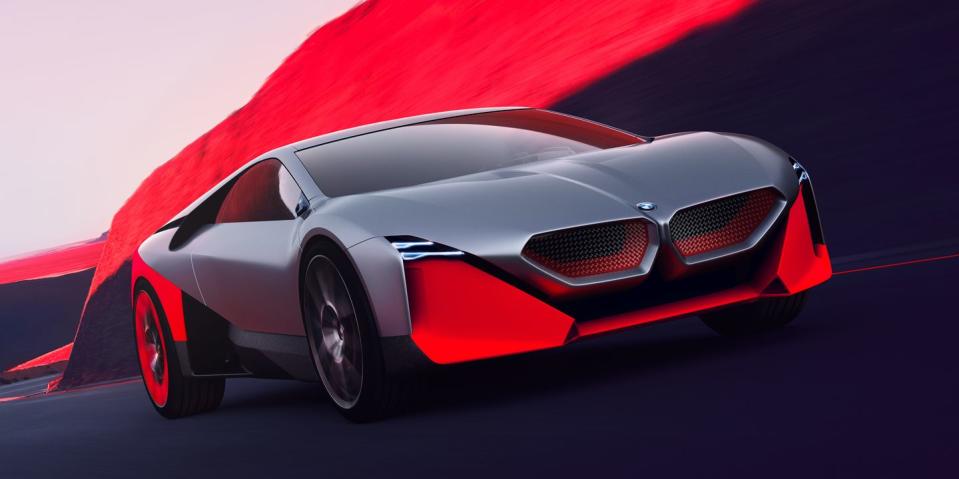
The BMW Vision M Next is a new plug-in-hybrid concept car that BMW says is the future of "sporty driving."
The extremely futuristic design has a number of retro cues taken from the M1 of the late 1970s.
BMW says it's a taste of the M brand's electric future, and we think it might preview a production supercar.
What you see here is the BMW Vision M Next concept, a quite absurd-looking hybrid supercar that BMW says is "a take on how driving pleasure might look in the future." It's the latest in BMW's string of concept cars under the Vision Next name, which was started in 2016 by the Vision Next 100 and continued in 2018 by the Vision iNext.
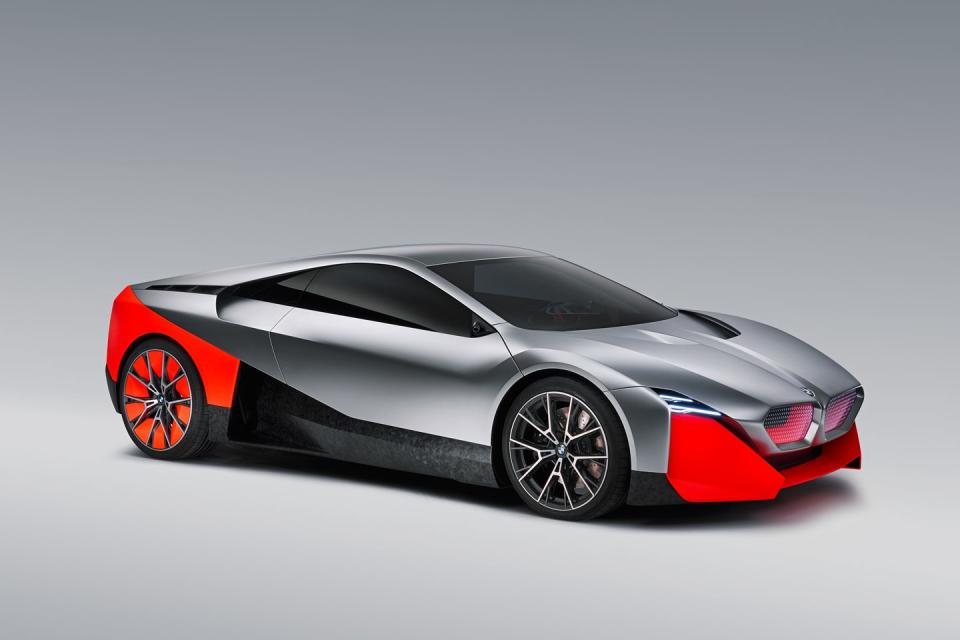
Power is provided by a mid-mounted turbocharged four-cylinder engine of unknown size that is part of a plug-in-hybrid system, the details of which are mostly undisclosed. Total system output is 591 horsepower, with BMW quoting a zero-to-62-mph time of three seconds and a top speed of 186 mph. The driver is able to select between "pure" rear-wheel drive or "electric" all-wheel drive—so there's at least one electric motor mounted at the front—and there is a Boost+ button that provides extra power when needed. In all-electric mode, BMW says, the range is 62 miles.
Finished in a color-blocked combination of "matt-neon" Thrilling Orange and "silk-matt" Cast Silver, combined with sections made from recycled carbon fiber, the wedge-shaped M Next is very striking. It's all hard creases and flat surfaces, with the colors used to split apart different design elements. The overall design is both extremely futuristic and sneakily retro, taking influence from modern BMWs including the i8 and some iconic older models, chief among them the M1 supercar and the Turbo concept that previewed it.
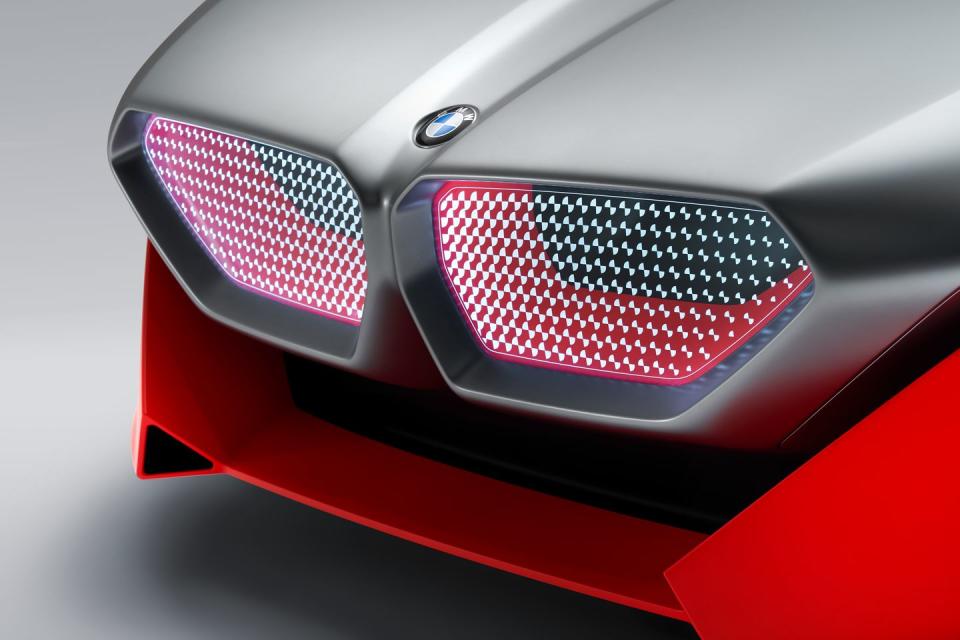
Dominating the front end are the kidney grilles. Their shapes, created by the lines of the hood, are integrated into the front end. The openings are covered by transparent panels, rather than mesh, with a laser-etched pattern in the shape of the BMW roundel—and the etchings light up. As on the new Z4, the headlights' two elements are vertically stacked rather than side by side, and they are made from what BMW calls Laser Wire technology. It uses glass fibers coated with phosphorous, forming precise and very slim lighting elements.
The angular interpretation of BMW's Hofmeister-kink design element is created by the shoulders and roofline of the car, framing the small side windows and integrating a hidden air intake. The most retro-looking element is the C-pillar design and its accompanying three-hole vent, which is taken directly from the M1. A massive air intake ahead of the rear wheels seems hidden at first glance, thanks to the color scheme. At 22 inches, the rear wheels are one inch larger than the fronts and have their own orange inserts, which BMW says are optimized for better aerodynamics.
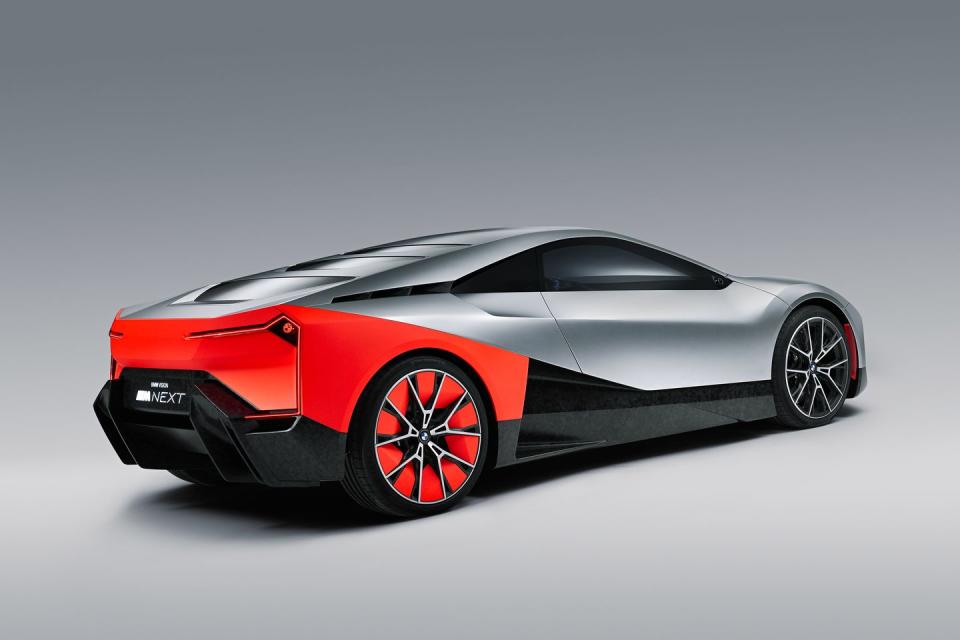
The rear-end shape shows more M1 influences with its little angular peaks at each corner, and the majority of the rear is taken up by a massive diffuser. The taillights use the same Laser Wire tech as the headlights and produce an abstract rendering of an ECG heartbeat. Echoing the dual BMW badges at the back of the M1, the Vision M Next has the roundel incorporated into the taillights, where they appear to float in the glass. Literally topping the car off is the three-tiered glass engine cover, reminiscent of the M1's rear louvers.
Instead of using a traditional key, the M Next has facial recognition technology that automatically unlocks the car as the driver approaches. The butterfly doors open with the press of a touch sensor, allowing access into the fairly simple interior. Nearly every surface is covered in Midnight Blue microsuede, with only parts such as the door pulls and steering wheel covered in leather. Other materials, including synthetic fibers and anodized titanium, are sparingly used, and Thrilling Orange paint accents a number of components.
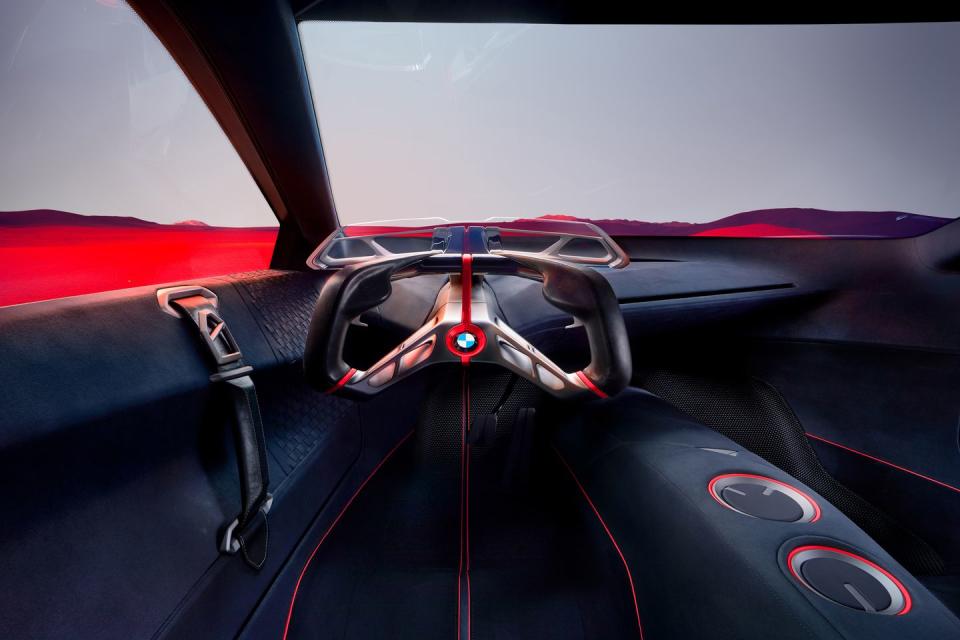
The interior is focused around what BMW calls the Boost Pod, which is made up of multiple curved glass screens in front of the driver, a head-up display, and two small screens on the funky steering wheel. The seats are covered in memory foam and seem part of a single piece sculpted from the interior itself, and there are few extraneous vents, buttons, or features other than the door pockets and two cupholders that BMW says are "gyroscopic" to compensate for strong g-forces.
It's refreshing that BMW makes no mention of any kind of autonomous features present in the M Next. Showing off the future of autonomy was the iNext's purpose, while the M Next is focused purely on driving. Adrian von Hooydonk, BMW Group's head of design, says it "demonstrates how state-of-the-art technology can also make the experience of driving yourself purer and more emotionally engaging." For instance, the information shown to the driver through the Boost Pod changes as speed increases, with everything important moving into the driver's direct line of sight.
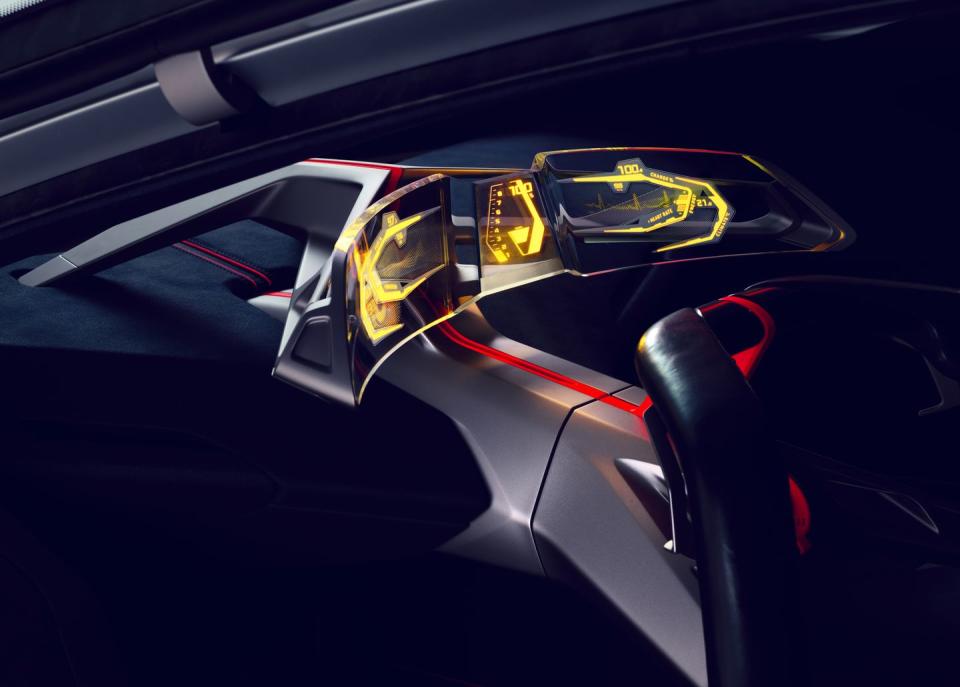
BMW doesn't hint at any possibility of production for the M Next, only saying that it's "a foretaste of the M brand's electrified future." But this concept isn't the first time BMW has toyed with the idea of reinterpreting the M1. In 2008, BMW showed the M1 Hommage concept at Villa d'Este, which was much more retro and M1 inspired than this Vision M Next. With the i8's future in jeopardy, could the M Next be a preview of a potential M-branded supercar that would act as an i8 replacement? We certainly hope so. And we're certainly glad that BMW sees a future where purely driver-focused cars have a place.
You Might Also Like

 Yahoo Autos
Yahoo Autos 